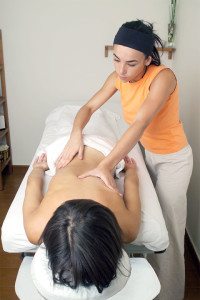What is a muscle contracture?
A muscle contracture is manifested as tension, often with pain and/or limited mobility. It is a prolonged, involuntary contraction of one or more muscles that are not injured. It usually occurs after physical exertion.
A muscle contracts and relaxes, but in some cases, the muscle area does not relax and remains contracted. This area remains hard and swollen, feeling like a bulge to the touch. It is commonly called a “knot”.
A contracture is not a serious injury, but it can be bothersome and may prevent us from making certain movements normally and without pain. That is why it is important to know how to identify them and differentiate them from other problems and then follow some simple guidelines to minimise their effects.
A contracture can appear in practically any muscle, but they are commonly found in the back, shoulders and neck due to the type of life we lead. Sedentary life creates tensions by bad postures, and physical exercise without later stretching or with inadequate technique leads to this type of ailments.
Types of muscle contractures
- Contractures during exertion: When doing any physical exercise, the body metabolizes active substances to produce movement. This process causes those active substances to be transformed into waste or inactive substances: the metabolites. When exertionis high, either because of the intensity of exercise, or because of lack of training, the body is unable to purify these metabolites through the bloodstream, which accumulate and generate pain and inflammation.
- Post-exercise contractures: In this case, the injury is caused by the muscle’s inability to return to its resting state. Sometimes, after an intense exercise in which the muscle has been subjected to a heavy workload, it is unable to return to its natural state of relaxation due to accumulated fatigue.
- Residual contractures: After a serious injury (fibre rupture, fracture, sprain, severe trauma), the muscles adjacent to the injured area tend to contract as a protective mechanism. This contraction for protective purposes means that once the main lesion has been repaired, the adjacent musculature is contracted.
+ INFORMATION ABOUT DEEP TISSUE MASSAGE
Factors that increase the chance of contractures
Bad Postures andunhealthy habits: People who work long hours on the computer or sitting are currently the most in search of massages to relieve pain and muscle contractures.This type of contractures are usually chronic because it is very difficult for a person to change their habits, apart from the fact that their muscles and muscle chains have already adapted to this position.Therefore, these kinds of people should exercise inaddition to having regular massage sessions to treat their cervical and lumbar pain.

Contractures in athletes: The lack of warm-up and subsequent stretching in sport can cause muscle overload and shortening. In addition, improper technique or repeated or overloaded exertion may exceed the muscle’s ability to adapt.
Older people: Like young people with poor muscle tone, as we age we lose elasticity in muscles and joints. This leads to daily activities becoming too much for a weakened musculature. This can be delayed by leading an active life and a good diet.
Stress: although it initially seems disconnected, the constant stress of daily life makes us involuntarily tense. Thus creating contractures. As a more illustrative example, it is common in cases of bruxism, which affects the neck. Also on an emotional level, back contractions and pain appear due to carrying excessive family and work burdens.
How to treat muscle contractures?
The first thing is to rule out any kind of injury. If you have any pathology, it must be treated by a medical specialist or physiotherapist. Once we know that there is no injury, being a “mild” but annoying ailment, it can be treated by following simple steps:
In the first place, one must rest, especially avoiding the movements or mechanisms that have led to the contracture. If a repeated movement has caused the contracture, it is best to stop for a while.
The application of dry heat can help in the first moments of contracture. We can use heat bags or heating pads. With this we will get better blood supply in the area purifying the muscle and feel an immediate relief. We can also do contrast baths alternating hot and cold water. This will stimulate circulation in the area.
The use of pharmacology is a more aggressive treatment, more chemical, but with faster results. Any anti-inflammatory drug, whether taken orally or applied to the skin, will aid in the recovery of the damaged area. This should always be prescribed by a qualified medical professional. The drug will not remove the source of the problem in this case, it will only remove the symptoms.
Massages are the most effective and natural method of all those exposed above. There is no better remedy for a contracture than to put yourself in the hands of a manual therapist to eradicate the ailment. If you have a contracture, it is possible that the massage may become painful, especially in the area of the contracture. This is normal and will be relieved as the contracture improves.
Since it is acaused by overload, and since it depends on the physical conditions and habits of each person, it is not possible to predict a pattern of recovery times or massage sessions. As a general rule it can be said that the less time the contracture takes (less chronic) the better and the sooner it will evolve.
You can see an evolution in a couple of sessions with one or two days between them to assess the improvement and then propose a continuity.
How to prevent muscle contracture
If you have a tendency to suffer muscular contractures, the best thing you can do is prevent them and distance yourself from possible relapses.
If your contractures come from repeated and sustained muscle contractions for sports or work reasons, it is advisable to take small breaks to stretch and recover mobility in the areas exposed to that movement. For example, if you are sitting in front of the computer for a long time, it is important to rest every hour and a half for ten minutes walking and moving your neck and back.
Many times, we unconsciously adopt incorrect postures, whether watching TV, in the chair at work or even sleeping. Actually, on many occasions we do not even know that this or that position is not the right one. This is why it is important to inform ourselves about what good postural hygiene is and to review all the habits from the moment we get up until we are asleep to see where we can improve our health. After all, these bad postures are a cumulative evil and the more time we spend doing them, the harder it will be to correct them, not only because of habit, but because our muscles are adapting to our lifestyles.
Before undertaking any physical activity, it is important to acquire the right muscle temperature and joint activation.
